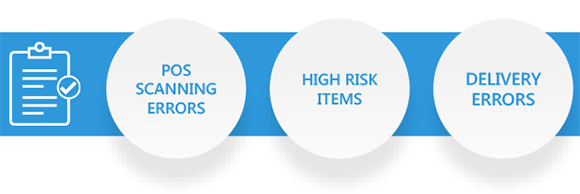How To Use Cycle Counts To Discover Errors And Decrease Shrinkage

Keeping track of inventory can help retailers not only meet customer demand by keeping shelves stocked with high-selling items, it can also help them keep a faithful watch on high theft items. Inventory errors and shrinkage can result in lost sales and profits. In addition to optimizing inventory placement and movement, it is crucial to utilize cycle counts (physical inventory counts) to avoid shrinkage and inventory errors. Creating cycle count tickets through Petrosoft’s cloud-based back-office system, C-Store Office simplifies the process of spotting store errors and can help eliminate future errors from occurring.
What is a cycle count?
A cycle count is an easy way of placing physical inventory counts on a cycle based on certain factors, including the item or category’s turnover rate, level of risk and any errors encountered through scanning at the point of sale. Cycle count tickets make it simple for owners to accurately track item-level inventory within their store locations at any time. The most common use for these are when a physical inventory count is being conducted, but you can also create a cycle count ticket to get current inventory levels of specific items and categories. Once the cycle count ticket is processed, an “Item Shortage Report” will be produced that informs the customer of where their overages and shortages are coming from.
How are cycle counts used?
- POS scanning errors may occur if items are not scanned properly at the point of sale, and cycle counts allow an owner to keep inventory numbers in check and prevent future errors through C-Store Office’s items inventory report.
- Keeps vendors in check, ensures inventory needs are met and provides an explanation as to why overages and shortages occur. Examples may be an invoice not being entered correctly, buy downs not being set up accurately, or spoilages or item transfers may not have been entered into the system.
- Invoice errors can also be viewed in C-Store Office’s items inventory report, where retailers can see every invoice that came in and how it was retailed out.
Store owners can optimize their store inventory and increase their bottom line by putting cycle counts in place to prevent future shrinkage, spoilage and out-of-stocks. They can then utilize Petrosoft’s cloud-based back-office system, C-Store Office, to pinpoint other details such as invoice processing errors, issues with item movement and even over-ordering of a product.








2comments